23 Abandoned Places in FLORIDA (Scary, Haunted, Creepy)
Welcome to the unsettling world of Florida’s abandoned places.
Everyone agrees that the state has plenty of gorgeous and fun spots, but did you know many places hide dark histories?
It’s true, and you’re about to find out about them.
From unethical operations to creepy cults to deadly theme parks, Florida has witnessed it all.
As you’ll come to find, some of these tales are far better off when forgotten.
Many of these places have compelling reasons for abandonment that will chill your bones.
If you’re not afraid of learning troubling facts and hearing haunting stories, read on to discover 23 of Florida’s abandoned places.
And by the way, you may also want to check out the Ghost Towns in Florida.
Abandoned Places in the Florida Keys, Florida
1. Upper Sugarloaf Key
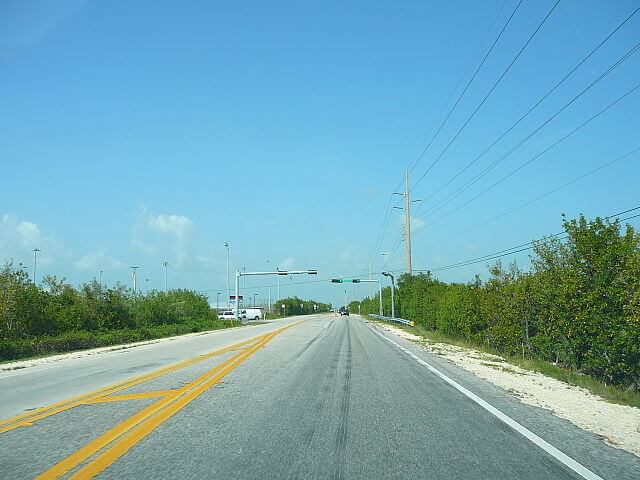
The Florida Keys are home to about 1,700 islands, and Upper Sugarloaf Key is one of the few that has been abandoned.
Many remote and sparsely populated areas exist on this little key, but some areas are completely wild.
In those wild areas, there’s evidence of abandoned Native American sites.
Rock piles have been covered with dirt and overgrown by grass and other plants, forever burying the mysterious past of these sites.
These piles are usually just a few feet tall, and their purpose remains unknown.
They may have been used by the Caloosa aboriginals, who occupied this region of Florida from about 500AD to the 18th century.
One of these rock piles contained seashells and old artifacts, but it was cleared away to make room for the aptly named Indian Mound Estates, which are currently selling for half a million to a million dollars or more.
The question remains whether the current residents of these abandoned Native mounds understand or respect the history buried beneath their feet.
Address: Upper Sugarloaf Key, Florida 33042
2. Lois Key

Lois Key is currently uninhabited.
However, this place used to be home to laboratory monkeys before it was abandoned.
Charles River Laboratories, one of the largest lab animal producers in the world, set up a breeding facility for rhesus monkeys on Lois Key in 1973.
Across the island, you could hear creepy monkey shrieks and calls echoing over the sand.
These monkeys were profitable for Charles River, selling for thousands of dollars each to scientists studying diseases like AIDS or Alzheimer’s.
However, the program continued to receive criticism from the community.
Sadly, Charles River’s monkey-breeding operations decimated the native mangrove forests and contaminated local waters.
Operations were forcibly shut down to protect the island’s dying nature, so now all breeding facilities have been destroyed and the monkeys removed.
Address: 24°36′51.65″N 81°28′29.66″W, Florida Keys, Florida
3. Indian Key
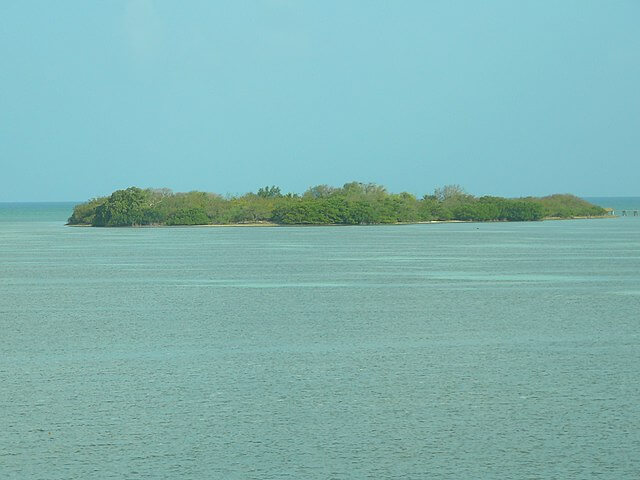
Indian Key’s story began in 1824 when a Key West worker opened a store there to serve Bahamian wreckers and settlers.
Jacob Housman moved there in 1830 and established himself as a leader in the community, buying property and building up the island.
Housman transformed the little island community into a well-established society, even acquiring an Inspector of Customs and a post office.
During the Second Seminole War that began in 1835, settlers gradually abandoned the Keys, but a small, determined militia in Indian Key tried to defend the settlers and keep the community intact.
In a turn of events, a group of “Spanish Indians” attacked Indian Key in the summer of 1840, killing 13 of the 50 to 70 island inhabitants.
Over the years, the population slowly dwindled as the area’s instability continued during the Third Seminole War in the 1850s and then the Civil War in the 1860s.
The last known inhabitant was a wrecker named William Bethel, who lived there until his death sometime in the 1880s.
Address: 24.8778°N 80.6769°W, Florida Keys, Florida
4. Lignumvitae Key
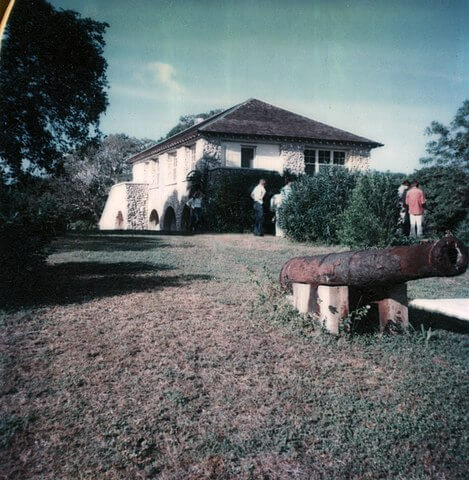
Thanks to this island’s small size and limited resources, it was never densely populated.
It did, however, house the Matheson family’s private retreat in the early to mid-1900s.
You can see the coral bedrock house in the image above, which still stands today.
Charlotte and Russell Neidhauk served as the island’s caretakers in the 1970s, but they eventually retired from the position.
Despite the presence of this shelter, no one moved onto the island after the Neidhauks.
The shelter and the island are abandoned to inhabitants, and this little sandy slice of history is only accessible by boat or kayak and is currently labeled as a conservation site.
You’re welcome to coast over but don’t expect a ranger-guided tour.
Self-guided tours are the only option to visit this once-occupied little island.
Due to its remote location, visit at your own risk.
Address: 24.902°N 80.699°W, Upper Florida Keys, Florida
5. Tarpon Belly Key
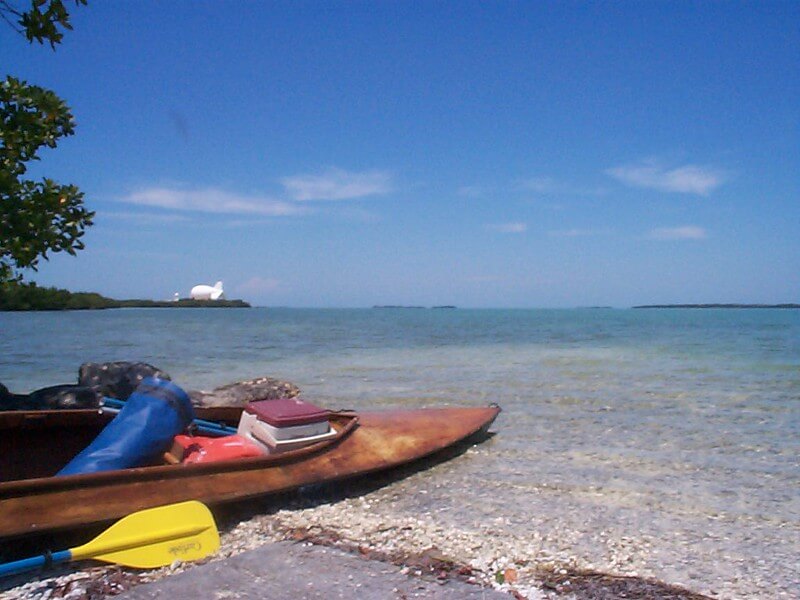
Here’s another small, remote island that was never densely populated but held a peculiar operation.
This now-abandoned island was once a shrimp farm.
In the 1960s, a determined businessperson dug a couple of canals on Tarpon Belly Key.
The appropriately-named Tarpon Belly Shrimp Farm had multiple dredged canals and handmade infrastructure to accommodate shrimping operations.
There’s a homemade tree swing and evidence of old campfires.
If you kayak to this abandoned key, you’ll find what looks like sandy beaches but are actually crushed seashells.
However, these days, the only people to step foot across those seashell shores are adventurous locals and occasional kayak-savvy travelers.
Address: Tarpon Belly Keys, Florida 33042
Also see our article on Haunted Houses in Florida.
Abandoned Places in Orlando, Florida
1. Water Mania Park
Florida has a long list of abandoned theme parks, and this is one of them.
However, this one has a gruesome history.
In the 1990s, half a million annual tourists came and went.
One day, in 1997, a maintenance worker entered and never left.
The man was decapitated and killed in a freak water turbine accident when he was sucked into the furiously spinning propellers.
A lengthy lawsuit followed, ending in a dismissed case.
Eight years later, in September 2005, the park shut down for good.
Perhaps it’s no coincidence that the park’s closing date was almost exactly on the anniversary of that grieving family’s decision to file that failed lawsuit against Water Mania.
Local news reported that the park was sold, but once its doors closed, it never reopened.
Today, a Golden Corral and mini golf course sit atop portions of the former water park’s property.
Address: 6073 W. Irlo Bronson Highway (U.S. 192)
2. River Country (Walt Disney World)
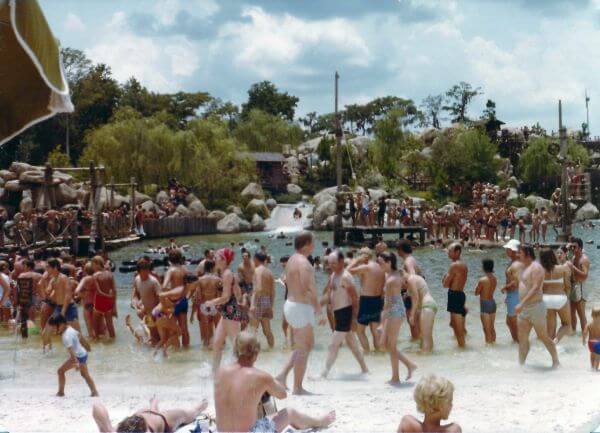
This was Disney’s first water park, near Disney’s Fort Wilderness Resort & Campground.
It had a rustic wilderness theme and used a special water filtration system to create a unique lagoon.
Unfortunately, several deaths occurred at this now-abandoned water park.
One death was of an 11-year-old boy who caught a water-transmitted infection in 1980.
In the coming years, two drownings occurred.
In 1989 and 1995, Typhoon Lagoon and Blizzard Bleach opened for business and became the two premier water parks of Disney.
Finally, in 2001, River Country was permanently closed but stayed put for almost 20 years before it was demolished, and as of 2023, a new resort in its place has yet to open.
Address: Walt Disney World Resort, Bay Lake, Florida, 32830
3. Splendid China

This Orlando theme park opened in 1993 and closed its doors after ten short years.
Splendid China was a sister park to the theme park of the same name in Shenzhen, China.
The 75-acre park cost $100 million and included 60 handcrafted replicas of famous Chinese landmarks.
At first, Chinese artists performed at this park, but after some sought political asylum in the U.S., they were replaced by American performers.
Controversies surrounding the incident with the Chinese performers weren’t a good look for this theme park.
The Citizens Against Communist Chinese Propaganda heavily criticized Splendid China since the Chinese government had ownership of it.
After it closed in 2003, vandals took over until it was finally demolished in 2013 and turned into the Margaritaville Resort.
Address: 3000 Splendid China Blvd. Kissimmee, Florida 34747
4. Sunland Mental Hospital

Sunland Hospital was originally part of the hospital chain W.T. Edwards Tuberculosis Hospitals.
In the 1960s, though, tuberculosis didn’t require hospitals, thanks to antibiotics.
So, the hospitals were converted into mental institutions.
Sunland Orlando was infamous for its horrid conditions, widespread patient abuse, and maltreatment.
The fact that people continued sending family members there is a chilling thought, but there were limited healthcare options for people with mental conditions around this time.
It closed in the 1980s, and the abandoned main building was demolished in 1999, leaving behind the administration building.
The site where the hospital was is now a children’s playground.
With the closing of this sour establishment, Florida closed a dark chapter in its healthcare history.
Address: 2100 All Children’s Way, Orlando, FL 32818
5. The Holy Land Experience
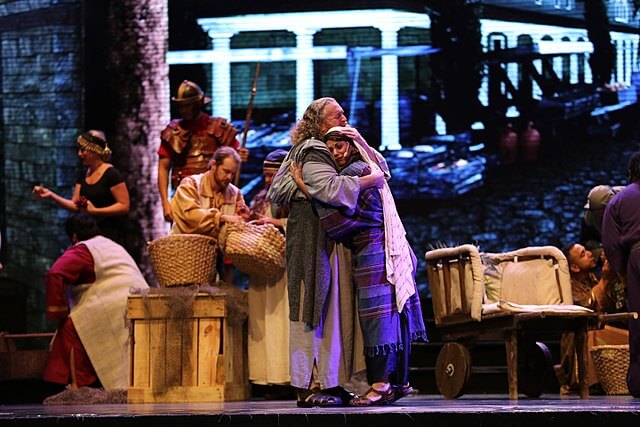
This Christian-based theme park brought 1st-century Jerusalem to life but was abandoned in 2021.
It first opened in 2001, containing some Van Kampen Collection biblical artifacts and hosting living theatrical productions and bible studies.
In 2007, the park changed ownership, and the new owner, Trinity Broadcasting Network, gave it a renovation that improved the guest experience.
So, what went wrong with this park that had such huge start-up and operational costs?
The Christian-themed park was controversial, sparking debates over tax exemptions and proselytizing Jews.
All of the controversies surrounding the park were not ideal for its popularity.
In 2020, the Holy Land Experience began laying off employees and closing much of its operations due to declining revenue.
Finally, in 2021, AdventHealth bought the property and announced plans to redevelop the land, marking an end to this Orlando theme park.
Address: 4655 Vineland Rd, Orlando, FL 32811
Also see our article on Escape Rooms in Florida.
Abandoned Places in Naples, Florida
1. Port of the Islands Hotel
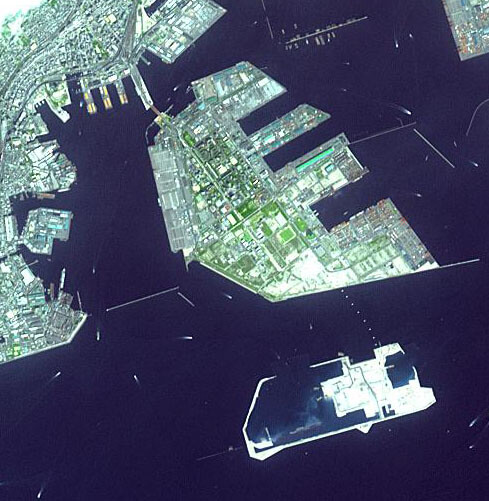
Port of the Island Hotel was wrapped up in a huge Floridian scam that ultimately ended with bankruptcy and abandonment.
In 1957, two fraudsters named Leonard and Jack Rosen started buying up swampy land near Naples and selling it for five times what it was worth to unassuming northerners who wanted to land in Florida.
They used a similar scam when buying and building the Port of the Islands Hotel, selling it to General Acceptance Corporation for over $200 million.
After that company filed for bankruptcy, a new player named Gopal Motwani bought the hotel and tried to fix it up and make it profitable.
However, in 2013 it was forced to close its doors after suffering from neglect and a lack of profits.
Today, the property stands across the highway from the active, 3-star hotel called Port of the Islands Resort.
Port of the Islands Hotel is overgrown, vandalized, and in shambles.
Address: 25000 Tamiami Trail E, Naples, FL 34114
2. Deep Lake Prison
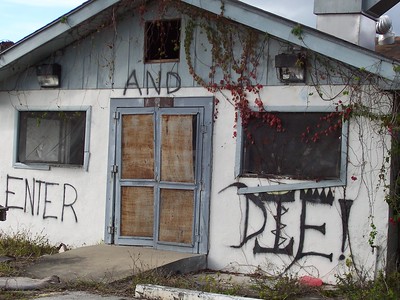
In 1952, the Deep Lake Prison, also known as the Copeland Road Prison, was built.
It quickly received a reputation for being the “Alcatraz of the Everglades” due to the way it accepted and housed extremely dangerous convicts.
In 1957, a massive 7-hour riot broke out among 26 of the prisoners, who were furious that they were denied a 15-minute break during the previous work day.
They damaged prison property, set fire to mattresses, and were finally subdued with tear gas.
From that point on, they were less likely to keep the most dangerous convicts and focused on prisoners who showed promises of rehabilitation.
However, due to the prison’s remote location and high costs, the Department of Corrections ordered it shut down in 2002.
Since then, adventurous locals have used the site as a paintball field.
Address: 26°2’31″N 81°20’46″W, 2MR3+QHC Big Cypress, Florida
3. Koreshan State Historic Site
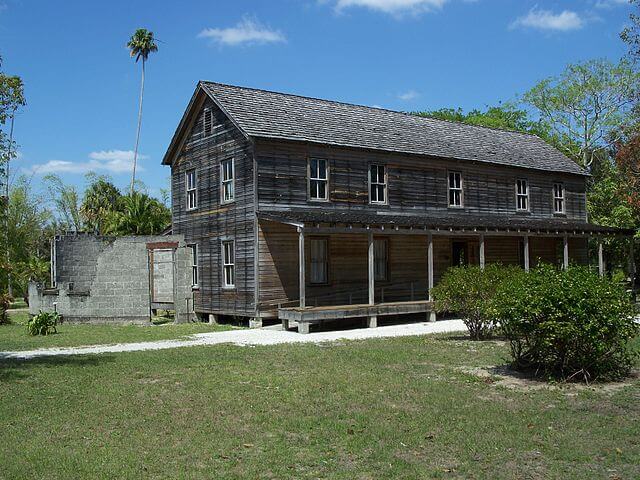
The Florida State Park Department describes the pioneers who settled in and built the Koreshan site as “eccentric” with “unique beliefs,” but most tourists today simply perceive them as members of a crazy cult.
Although the strange religious group that built this place has long gone, the site has been preserved by the state.
Cyrus Teed founded the Koreshan religion, proclaiming he was the new Messiah and preaching values of celibacy, community, and equality to gain immortality.
Teed moved his followers from New York to Chicago before creating this communal utopia near Naples, Florida.
The “New Jerusalem” of this Koreshan site peaked from 1903 – 1908, when there were 250 inhabitants.
After Teed died in 1908, membership dwindled.
The last known member joined in 1940, moved to the commune to take care of the grounds, and died in 1981, leaving the site abandoned.
Address: 3800 Corkscrew Rd., State Highway 41, Estero, Florida
Also see our article on Castles in Florida.
Abandoned Places in Lakeland, Florida
1. Carpenter’s Home
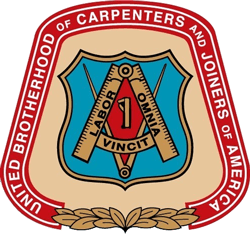
In 1881, the United Brotherhood of Carpenters and Joiners of America was founded.
This union fought diligently to protect the wages, working hours, and benefits for carpenters across the nation.
The Carpenter’s Home officially opened in 1929 as a splendid retirement property in Lakeland on 1,684 acres of land.
However, the establishment closed down in 1976.
For decades, the main building served as a church school for the local community, but it wasn’t well-funded, and its participants slowly dwindled over time.
Eventually, though, in 2011, the building was completely abandoned and began falling apart.
In 2016, the building was restored, and today, it’s used for its original purpose as a retirement home.
So, while it’s not abandoned in the present day, it was abandoned by its original builders.
Address: 771 Carpenters Way, Lakeland, FL 33809
2. Lakeland Subdivision Rail Yard
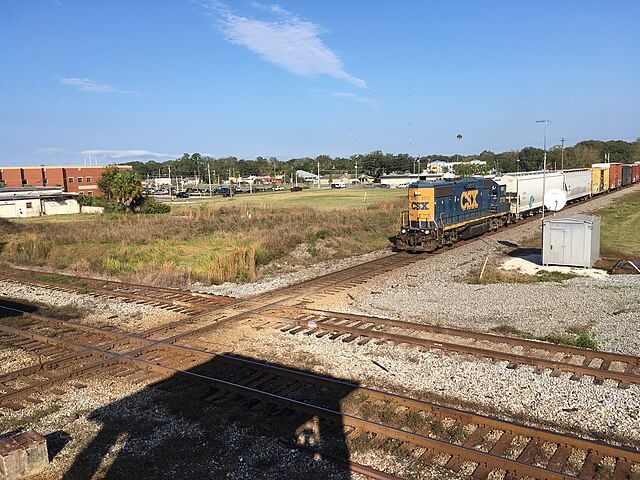
The Lakeland Subdivision is a CSX Transportation rail line in central Florida.
One 170-acre rail yard in Lakeland has long been abandoned, visited only by animals, people dumping trash, or the homeless community.
After it was abandoned due to infrequent use, the rail yard transformed for the worse.
It was trashed and used illegally as a dumping site, so the rail yard started taking on the appearance of a dump rather than a respectable part of history.
A homeless community formed there, one of the largest in the Lakeland area.
However, leading up to 2022, the rail yard was transformed yet again.
Private donors helped developers haul 36 tons of trash away from the rail yard, and a beautiful park called Bonnet Springs was built in its place.
Address: 400 Bonnet Springs Boulevard, Lakeland, FL 33815
Also see our article on Tourist Places in Florida.
Abandoned Places in Clearwater, Florida
1. Jack Russell Stadium
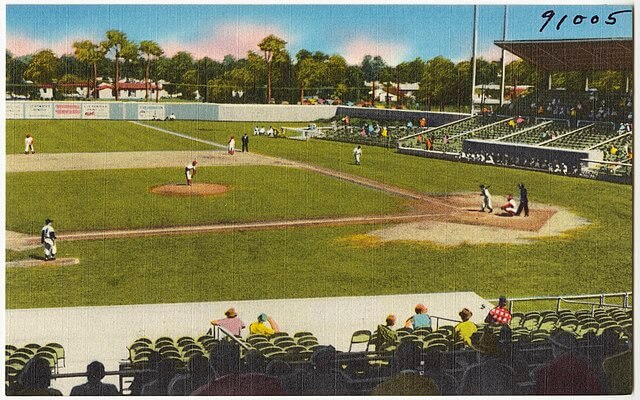
Jack Russell Stadium, named after the Clearwater City Commissioner, was home of the Philadelphia Phillies MLB team’s spring training program from 1955 to 2003.
A local Clearwater softball team used to play their home games at this stadium in the 1950s and 60s, using the stadium well.
During this time, it was well-appreciated by the local community and was kept in good condition.
Despite the upbeat background of this sports facility, the tables turned after the Phillies relocated their spring training elsewhere in 2003.
In 2007, much of the abandoned stadium was demolished, but some parts were left untouched.
The dugouts, field, and some offices are still used today by local baseball teams, but the site is reportedly haunted by the late commissioner Jack Russell.
Address: 800 Phillies Dr, Clearwater, FL 33755
2. Belleview-Biltmore Hotel
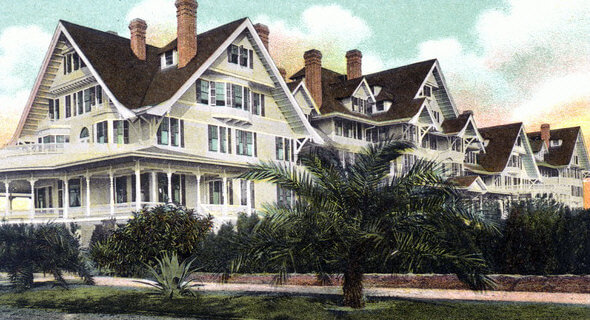
The once-popular Belleview-Biltmore hotel faced closure in 2009 and demolishment in 2015.
Railroad tycoon Henry B. Plant first built the iconic hotel back in 1897 on the eastern shoreline of Old Clearwater Bay.
Over the decades, it hosted U.S. presidents, world leaders, and celebrities.
During WWII, Air Force servicemen were stationed there.
In a turn of events, the 1970s and 80s brought on tough times for the Belle-view Biltmore as more modern, larger beachfront hotels were built in Clearwater Beach.
In the following years, building ownership changed hands, and various renovations were completed, but the decaying fifth floor was closed off to guests and was reportedly haunted.
After city-wide debates about what should be done with the property, its new owners successfully lobbied for its demolition and redevelopment.
In 2015, the demolition signaled the end of this dying hotel and the beginning of future townhomes and condos.
Address: 25 Belleview Blvd, Belleair, FL 33756
3. The Historic Fenway Hotel

The Fenway Hotel was built in 1927 and operated seasonally until 1961, hosting mainly Northerners coming down in the winter, who enjoyed the beautiful scenery.
In 1961, Trinity College moved onto the site, bringing along a community of biblical students.
Fenway Hotel was abandoned in 1988 when Trinity College moved once again.
In 1991, Schiller International University bought the property and moved in but vacated the premises in 2005.
After failed renovation plans by Pennsylvania hotelier James Bower, the Taoist Tai Chi Society bought the property.
They wanted to turn it into their international headquarters but instead renovated it into a boutique hotel, which some people believe is haunted today.
Local blogs have covered the property’s supposed hauntings, but those claims remain unproven to this day.
Address: 453 Edgewater Dr, Dunedin, FL 34698
Also see our article on Birthday Places in Florida.
Abandoned Places in Jacksonville, Florida
1. The Ambassador Hotel
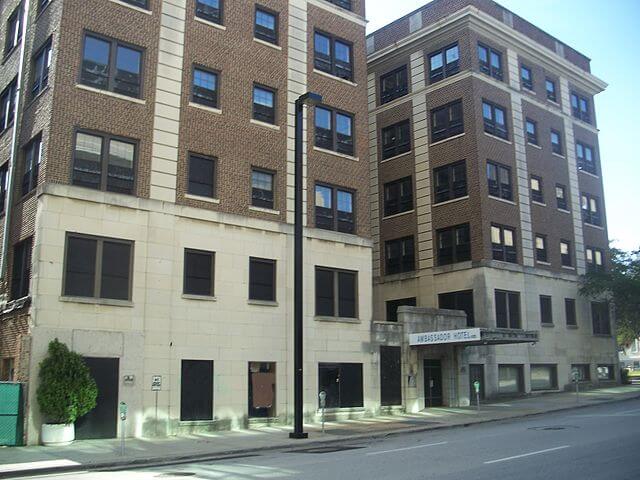
Economic investments haven’t always been available to many parts of downtown Jacksonville, leaving many buildings abandoned and slowly decaying.
The Ambassador Hotel is one example.
In 1924, it was built as a luxury apartment building, but its good fortunes declined over the decades.
Due to a lack of funding, there were not many improvements made to the building, and it struggled to stay afloat.
It was transformed into the Ambassador Hotel in 1955, but its reputation steadily fell throughout the 1980s.
In 1998, the building was condemned.
Abandonment did not treat the building well, and several failed renovation plans came and went over the next twenty years.
The last update on this abandoned hotel was in 2022 when renovations were reported to be underway to transform this century-old building into a modernized boutique hotel.
Address: 420 N. Julia St, Jacksonville, Florida, USA
2. Annie Lytle Elementary School (Public School Four)
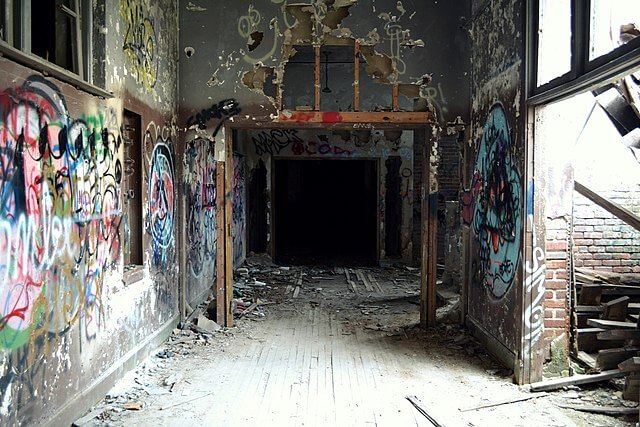
Locals nicknamed this long-abandoned elementary school the “Devil’s School.”
This school was built in 1917 at the site of the former Riverside Park School.
When I-95 and I-10 were built up around the school, it became isolated, so it was closed down in 1960.
The City of Jacksonville condemned the building in 1971, and for nearly thirty more years, the abandoned building decayed and was vandalized.
In 1999, an investor wanted to bulldoze it down and build modern condos in its place, but there was pushback from the community.
It was declared a historical site in 2000, and the Annie Lytle Preservation Group has put forth great effort since then to protect the integrity of the site, including partnering with the local sheriff’s office.
Despite widespread rumors that the abandoned children’s school is haunted, the preservation group rejects all claims and warns heavily against trespassing.
Address: 650 Chelsea St, Jacksonville, FL 32204
3. Springfield Public School No. 8

This public school, also known as Graded Springfield School, was built in 1909.
Serving the Phoenix Avenue neighborhood, it was expanded in 1926.
However, the school’s use dropped after the Haines Street Expressway was built in the 1960s.
In 1991, it was repurposed as a Montessori school but later abandoned when the Duval County School Board voted in favor of a new school building.
This century-old site has been completely vacant since 2013, save for the occasional urban explorer, even though trespassing on this property may result in arrest.
Most of the windows are covered in boards, making the interiors spooky and pitch-black.
Visitors also include the local homeless population, stray animals, and police, so if you’re seeking to check out this abandoned Jacksonville building, take caution.
Address: 1221 E 16th St, Jacksonville, FL 32206
4. Cecil Field Nuclear Weapons Storage Area
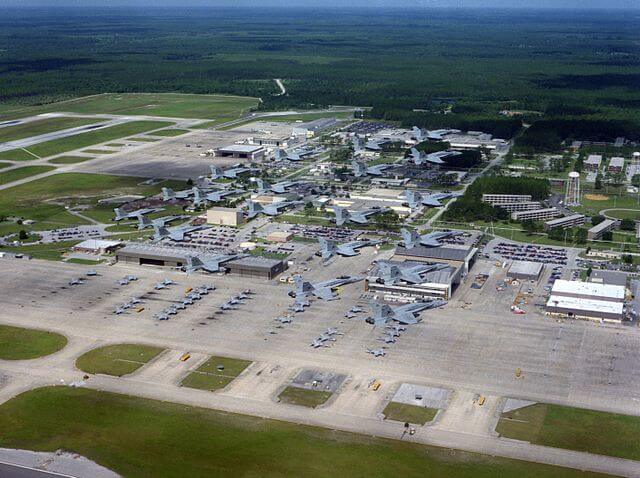
In western Duval County, near Cecil Field, a now-abandoned storage facility served an ominous purpose.
Eighty-nine ammunition bunkers and underground storage spaces housed nuclear weapons during the Cold War, unknown to the surrounding community.
Until 1985, the mysterious site was kept secret from the public, for better or worse.
However, a journalist found out information about this place, and a piece exposing its use was published.
When information about this nuclear storage site surfaced, the U.S. government refused to comment on it.
President George H.W. Bush started dismantling nuclear weapons in the 1990s, and the ones stored in Duval County were transported to Amarillo, Texas.
Cecil Field was later transformed into Cecil Commerce Center, but some abandoned bunkers and concrete storage areas exist today behind barbed-wire fences.
Address: 30°13′07″N 081°52′36″W, Duval County, Florida
5. Ford Motor Co. Assembly Plant (Matthews Bridge)
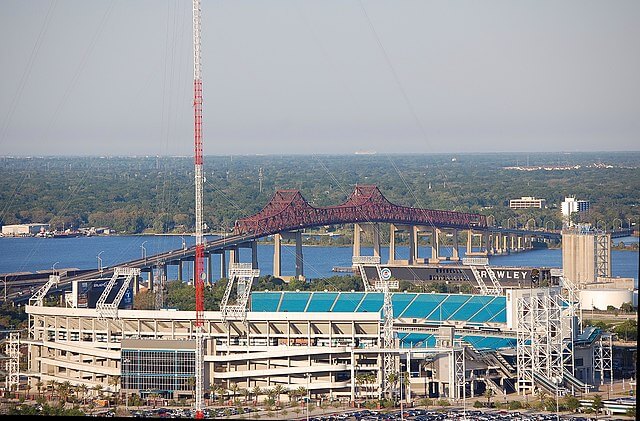
Ford Model T cars were booming in the 1920s, and to respond to demand, Ford built a new manufacturing plant by Matthews Bridge in Jacksonville in 1923.
Over the next few years, the facility grew from 115,000 square feet to 165,000 square feet thanks to economic activity and funding opportunities that the plant received.
Sadly, during the Great Depression in 1932, the plant wasn’t needed due to the economic downturn.
Instead, it was used by Ford to distribute parts until 1968.
After that, the facility was passed from business to business, housing import firms and storing wooden pallets.
Essentially, after Ford abandoned this property, it never saw the same use.
The latest update from 2022 is that this once-great facility will be demolished due to its degraded state.
Address: 1900 Wambolt St, Jacksonville, Florida
If you liked this article, you may also like to read about the best Date Ideas, Fun things to do, and Amusement Parks in Florida.
Looking beyond Florida? Check out our articles on some popular Abandoned Places in California and New York.
